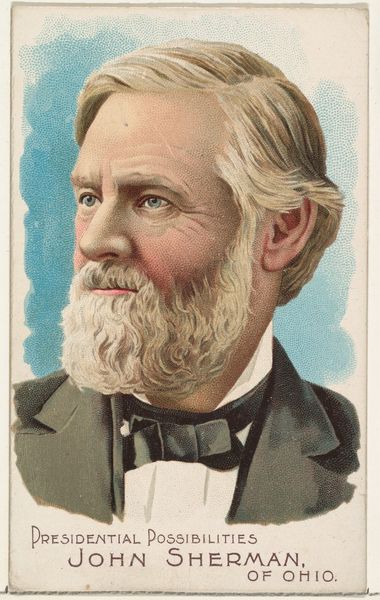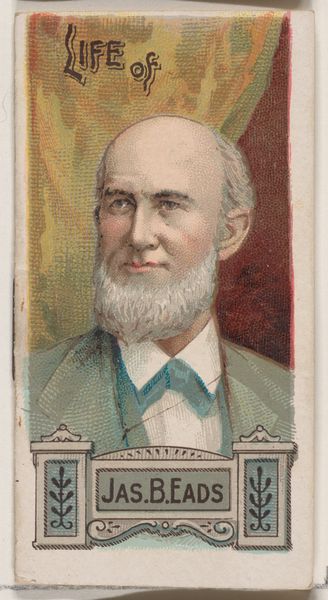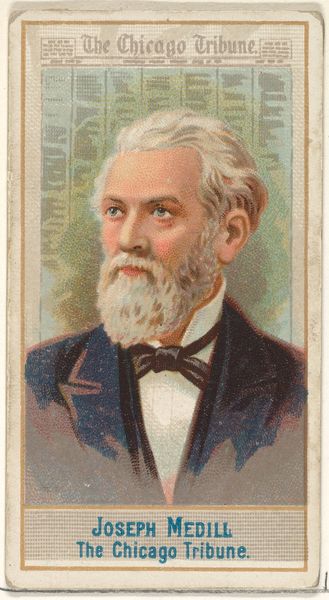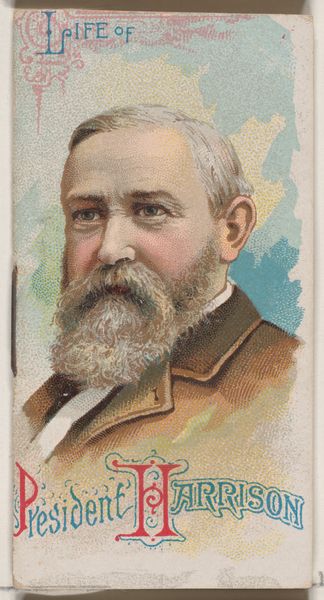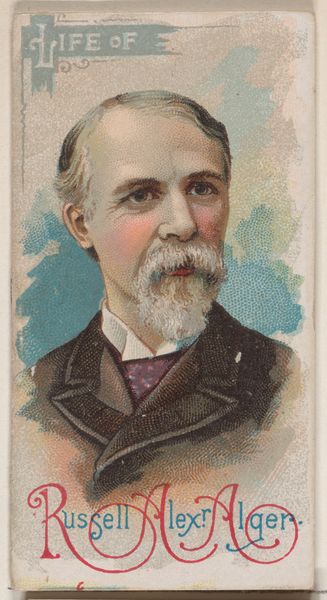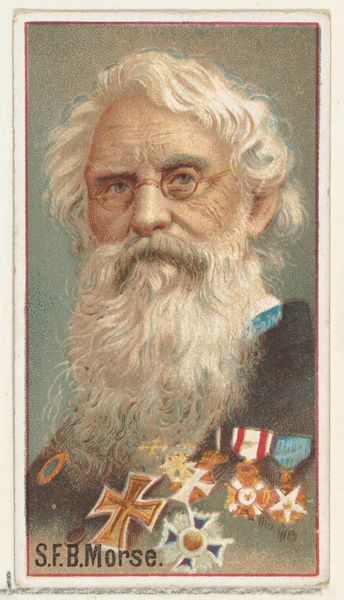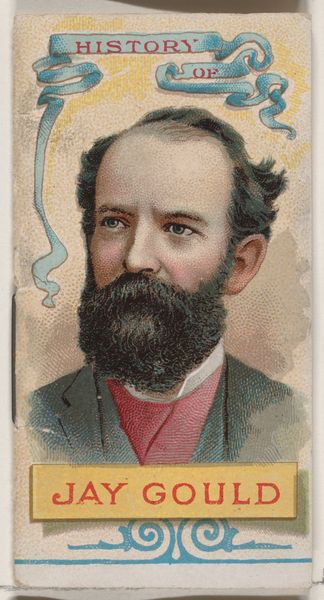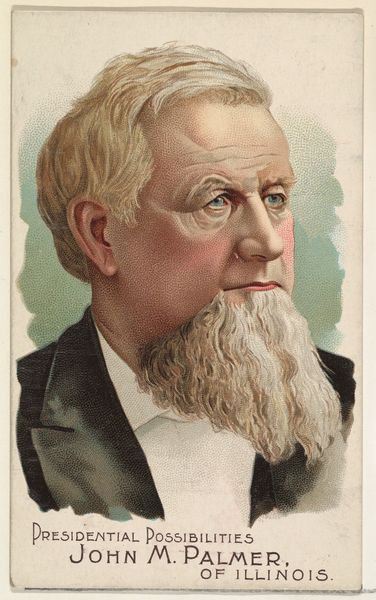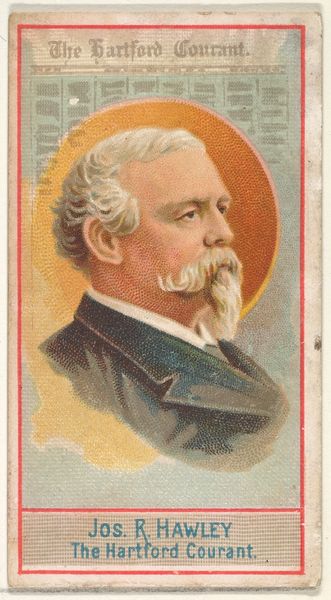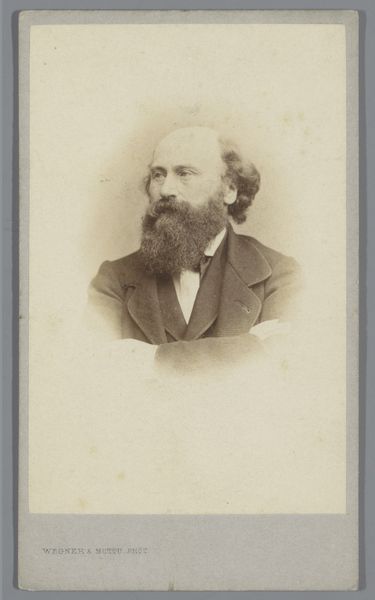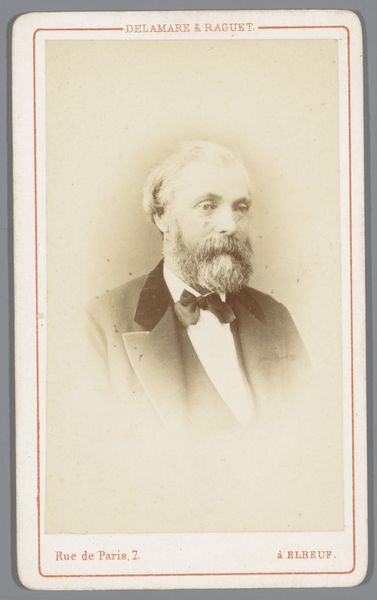
Life of Cyrus West Field, from the Histories of Poor Boys and Famous People series of booklets (N79) for Duke brand cigarettes 1888
0:00
0:00
drawing, coloured-pencil, print, watercolor
#
portrait
#
drawing
#
coloured-pencil
# print
#
impressionism
#
oil painting
#
watercolor
#
coloured pencil
#
men
#
watercolour illustration
#
genre-painting
#
academic-art
Dimensions: Overall (Booklet closed): 2 3/4 × 1 1/2 in. (7 × 3.8 cm) Overall (Booklet open): 2 3/4 × 2 7/8 in. (7 × 7.3 cm)
Copyright: Public Domain
Editor: Here we have "Life of Cyrus West Field," a color print from 1888 by W. Duke, Sons & Co., part of their "Histories of Poor Boys and Famous People" series. It's a portrait, and it feels very… nostalgic, almost saccharine. What can you tell me about it? Curator: This image, seemingly innocent, actually opens up a critical discussion about advertising and the construction of celebrity in the late 19th century. Cyrus Field was celebrated for his role in laying the transatlantic cable, yet here he is, a marketing tool for tobacco. How does this context shift our perception of the portrait? Editor: It's strange to think of someone's life being summarized and used to sell cigarettes. It feels… reductive? Was this a common practice? Curator: Absolutely. These "rags-to-riches" stories were hugely popular. They served as propaganda, reinforcing the idea that anyone could achieve success through hard work, conveniently ignoring the systemic inequalities of the time. We must ask: Whose stories are told, and whose are erased in these narratives of success? And who ultimately benefits from these stories? Editor: So, the portrait is not just about Cyrus Field, but about the values being promoted at the time? Curator: Precisely. It's about aspirational identity and the persuasive power of advertising. This seemingly harmless image becomes a lens through which we can examine issues of class, consumerism, and the manipulation of public perception. Editor: That definitely changes how I see it. I was initially just noticing the aesthetic qualities, but now I'm thinking about the bigger picture – who created this image and why? Curator: And who was meant to consume it? Examining art like this forces us to unpack the power dynamics at play in what we consume every day. It challenges us to consider the broader societal implications, wouldn’t you agree? Editor: Yes, I definitely agree! This exercise shows how crucial it is to delve beyond surface appearances. I'll never look at vintage ads the same way again.
Comments
No comments
Be the first to comment and join the conversation on the ultimate creative platform.
